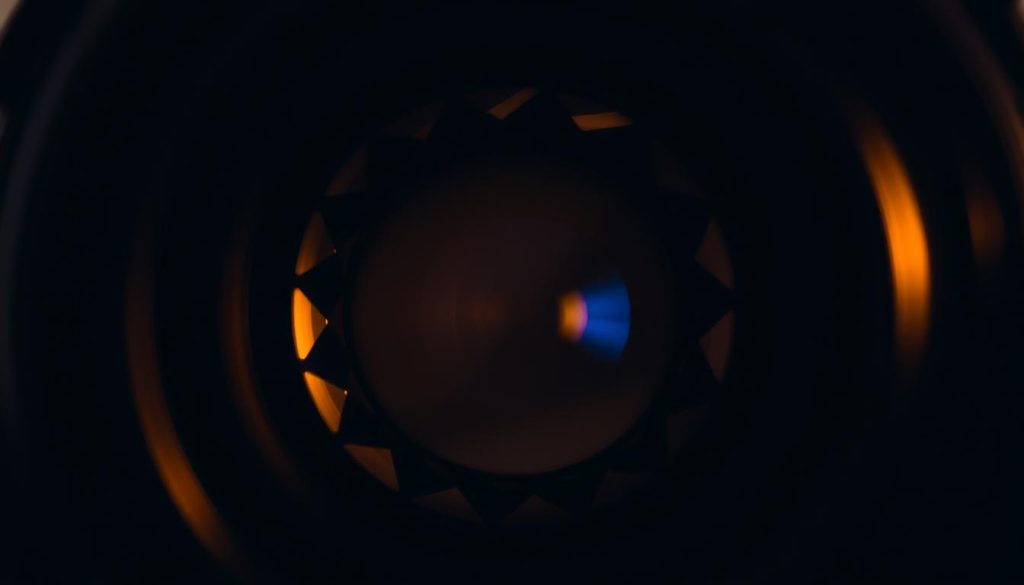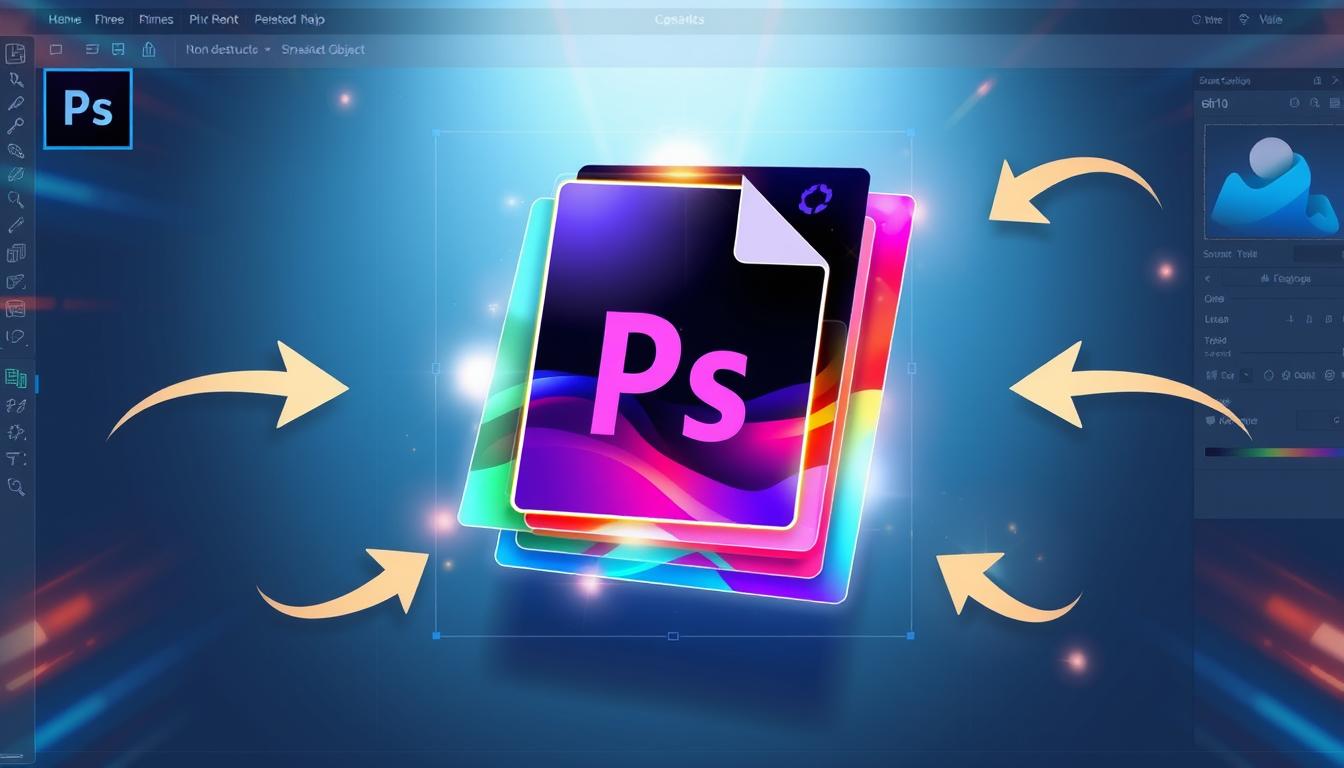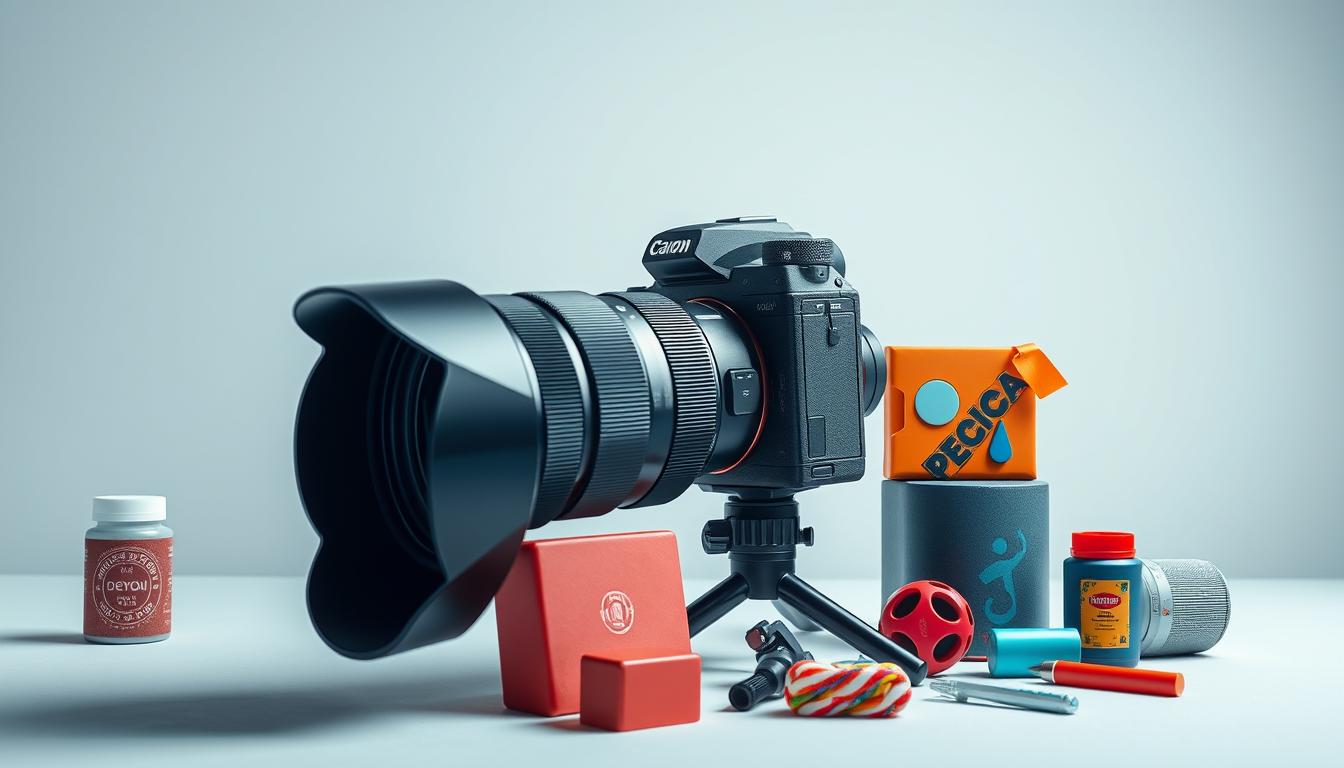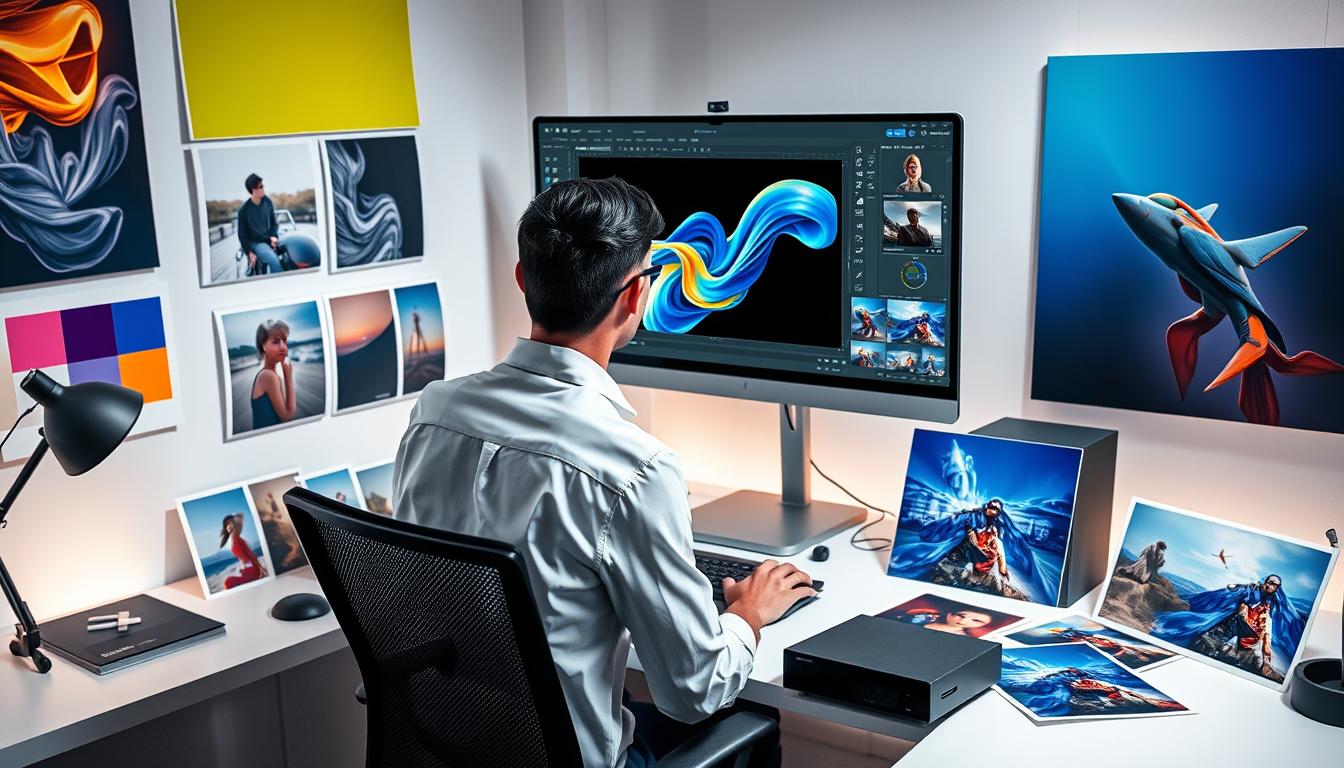Learning about photography stops explained is key to taking amazing photos. It’s a basic idea that can make your photos better. It lets you control how much light your camera gets.
Understanding exposure basics means knowing how to balance light in your photos. You do this by adjusting the exposure triangle: aperture, shutter speed, and ISO. By mastering these, you can make photos that show your vision.
When you get into photography fundamentals, you’ll see how important stops are. They help you use your camera to its fullest. This way, your photos will really stand out.
Understanding Exposure in Photography
Exposure in photography is key to the quality of your images. It’s the base for making great photos. It lets photographers share their message or capture a moment.
Exposure Triangle Explained
Exposure triangle has three main parts: aperture, shutter speed, and ISO. Aperture is the camera’s aperture size, controlling light. Shutter speed is how long the shutter is open, affecting light. ISO is how sensitive the camera’s sensor is to light.
Knowing how these elements work together is key. For example, a low ISO and fast shutter speed are good for bright light. A wider aperture can create a shallow depth of field.
Why Proper Exposure Matters
Proper exposure is crucial for your photos’ look and feel. Underexposure can lose details in shadows. Overexposure can ruin highlights. The right exposure makes your photos balanced and attractive.
Mastering the exposure triangle lets photographers control their craft. They can make images that are both technically correct and visually stunning.
What Are Stops in Photography?
Stops are key in photography and impact how bright an image is. They measure exposure changes, like doubling or halving light to the camera’s sensor.
Definition and Basic Concept
A stop in photography is a way to measure exposure changes. Adjusting your camera by one stop means you’re changing the light amount. For example, increasing exposure by one stop lets in twice as much light.
This rule applies to aperture, shutter speed, and ISO. Knowing stops helps photographers make better camera setting choices. It’s a way to talk about exposure adjustments.
Mathematical Basis of Stops
Math behind stops is simple: it’s about doubling or halving. One stop change means you’re doubling or halving the exposure. This is a logarithmic scale, making adjustments easier.
For instance, moving from f/4 to f/2.8 lets in twice as much light. Going from f/4 to f/5.6 cuts the light in half. This math helps photographers adjust settings for the right brightness and detail.
History and Development of the Stop System
Stop system has changed a lot, from film to digital. It’s key in photography today. Its history is linked to camera and tech development.
Origins in Film Photography
In film days, the stop system was mechanical. It used aperture and shutter speed to control light. Photographers adjusted these by hand, often through trial and error.
Important moments include:
- Standardized aperture values were introduced
- Shutter mechanisms improved for better exposure control
Evolution in the Digital Era
Digital photography changed the stop system a lot. It added electronic controls and digital processing. Today’s cameras have:
- Auto-exposure modes that adjust settings
- Advanced metering for better control
These updates have made working with stops easier. They give photographers more control and flexibility.
How Aperture Stops Affect Your Images
Learning about aperture stops can make your photos better. It lets you control the depth of field and get the look you want. Aperture stops are key in the exposure triangle, affecting the brightness and look of your photos.
F-stops Explained
F-stops, or f-numbers, show the lens’s focal length to the aperture’s diameter. A small f-stop value (like f/2.8) means a big aperture, letting in more light. A big f-stop value (like f/16) means a small aperture, letting in less light. Knowing f-stops helps you control exposure and depth of field.

Depth of Field Control
Aperture stops change the depth of field, which is what’s in focus in your photo. A wide aperture (small f-stop number) gives a shallow depth of field. This makes the subject sharp and the background blurry.
A narrow aperture (big f-stop number) gives a deep depth of field. This keeps more of the image sharp. For example, f/1.4 is great for portraits to blur the background. F/8 or f/11 is good for landscapes to keep everything sharp.
Creative Applications of Aperture Stops
Aperture stops open up creative possibilities for photographers. By changing the aperture, you can control light and depth of field. This lets you create different artistic effects.
For instance, a wide aperture can blur the background in portraits, focusing on the subject. A narrow aperture is good for landscapes, keeping everything sharp from near to far.
Trying out different aperture stops can really improve your photos. It gives you the freedom to get the mood and effect you want in your images.
Shutter Speed Stops and Their Impact
Learning about shutter speed stops can make your photos better. It lets you control how moving things look in your pictures. Shutter speed is key to capturing motion.
Shutter speed stops are in seconds or parts of a second. Changing them can change your photos a lot. A quick shutter speed freezes fast things. A slow one makes things blurry, showing motion.
Common Shutter Speed Stop Values
Shutter speeds range from very fast to very slow. You’ll see values like 1/500, 1/250, and 1 second. These are common for different shots.
Freezing vs. Blurring Motion
Choosing to freeze or blur motion depends on what you want your photo to show. For sports and wildlife, fast shutter speeds are best. They keep moving subjects sharp. But, slower speeds can make water or clouds look artistic.
Practical Shutter Speed Techniques
Techniques like panning and using a tripod are helpful. Panning means moving with your subject. A tripod helps with slow shutter speeds. Trying different speeds can get you the look you want.
Knowing about shutter speed stops can make your photos tell a story or feel more emotional. It’s a powerful tool for photographers.
ISO Stops and Image Quality
ISO sensitivity is key in photography and affects your images. It measures how well the camera sensor picks up light. A lower ISO means the sensor is less sensitive, while a higher ISO makes it more sensitive.
Understanding ISO Sensitivity
ISO values range from ISO 100 to ISO 6400 or more. Lower ISO values (e.g., ISO 100) are best for bright lighting conditions, like sunny days. They give the best detail and least noise. On the other hand, higher ISO values (e.g., ISO 1600 or higher) are used in low-light conditions. They help get faster shutter speeds and sharper images in dim places.
Noise and Dynamic Range Considerations
But, higher ISOs have downsides. Higher ISO settings can introduce noise or grain in your images, making them less clear. Noise is more visible in dark areas and can make images look unnatural. Also, high ISOs can cut down the dynamic range, which is the contrast between light and dark in an image.
So, it’s important to balance ISO with other settings to keep image quality high.
When to Adjust ISO vs. Other Settings
Knowing when to change ISO versus aperture and shutter speed is crucial. In bright conditions, use the lowest ISO possible and adjust with aperture and shutter speed. In dim conditions, you might need to raise the ISO, but also think about using a tripod or a wider aperture. The goal is to find the right mix for your shot.
Understanding ISO stops and their effect on image quality helps photographers make better choices. This way, they can get the look they want for their photos.
Reciprocal Relationship Between Stops
In photography, aperture, shutter speed, and ISO work together in a special way. This relationship helps us get the look we want in our photos.
Equivalent Exposures Explained
Equivalent exposures mean different ways to get the same light in a photo. For example, opening the aperture lets more light in. You can then shorten the shutter speed or raise the ISO to balance it out.
Here’s a table showing how different camera settings can give the same exposure:
Making Creative Choices with Equivalent Exposures
Knowing about equivalent exposures lets photographers make creative exposure choices. By tweaking settings, you can get the look you want, like a sharp subject or a blurred background.
For instance, a photographer might use a wide aperture and fast shutter speed for a sharp portrait. Or, they might choose a narrow aperture and slow shutter speed for a landscape with motion blur.
Common Mistakes and Challenges with Exposure Stops
Even with a good grasp of exposure stops, photographers can still fall into common traps that affect image quality. Understanding these potential pitfalls is crucial for improving photography skills.
Overexposure and Underexposure Issues
Overexposure and underexposure are two of the most common issues photographers face when dealing with exposure stops. Overexposure occurs when too much light reaches the camera sensor, resulting in lost details in the highlights. On the other hand, underexposure happens when not enough light is captured, leading to dark images where shadow details are lost.
To avoid these issues, photographers must carefully adjust their camera settings. For instance, in bright conditions, using a smaller aperture (higher f-stop number) or faster shutter speed can prevent overexposure. In low-light conditions, a larger aperture (lower f-stop number) or slower shutter speed can help prevent underexposure.
Troubleshooting Exposure Problems
When exposure problems arise, troubleshooting is key. The first step is to review the image on the camera’s LCD screen and histogram to assess the exposure. If the image is overexposed or underexposed, adjust the exposure compensation.
Another critical aspect is understanding the scene’s dynamic range. In high contrast scenes, photographers can use techniques like exposure bracketing to capture a range of exposures and later merge them using HDR software.
Learning from Exposure Mistakes
Mistakes in exposure are inevitable, but they offer valuable learning opportunities. By analyzing what went wrong, photographers can refine their understanding of exposure stops and improve their technique.
For example, reviewing images that suffered from overexposure or underexposure can help photographers identify patterns in their shooting habits or common scenarios where they struggle. This insight can guide adjustments in their approach to exposure, such as being more cautious with exposure compensation in certain lighting conditions.
Practical Applications: Using Stops in Different Scenarios
Learning to use stops well is crucial for improving your photography skills. It can greatly enhance the quality and impact of your photos.
Landscape Photography
In landscape photography, use smaller aperture stops like f/11 or f/16. This ensures a large depth of field. It keeps more of the image sharp from front to back, perfect for wide scenes.
Portrait Photography
For portraits, a wider aperture stop like f/2.8 is best. It creates a shallow depth of field. This blurs the background and focuses on the subject, making them stand out.
Sports and Action Photography
In sports and action shots, fast shutter speeds are key. Adjusting shutter speed stops helps capture the perfect moment. Whether it’s a fast game or dynamic action, it’s all about the timing.
Low Light and Night Photography
For low light and night shots, adjusting ISO stops is vital. Higher ISOs can brighten images but watch out for noise. Finding the right balance with shutter speed and aperture stops is essential for clear low-light photos.
Macro Photography
In macro photography, a small aperture stop is good for sharp focus. But, you might need to adjust other settings to let in more light.
Mastering stops in various photography genres can greatly improve your work’s quality and creativity.
Conclusion: Mastering Stops for Better Photography
Learning about stops in photography is key to getting better at it. It helps you control your camera and show your creative side through your photos. You can adjust aperture, shutter speed, and ISO to get the right exposure.
We’ve covered the basics of stops and how they affect your photos. The best way to get better is to keep practicing. As you do, you’ll learn how to use the exposure triangle to get the look you want.
Using what you’ve learned here, you’re on your way to better photos. With hard work and practice, you can master exposure and show off your best work. You’ll be able to take your photography to new heights.
FAQ
What are stops in photography?
Stops in photography measure how much light your camera gets. It can change through aperture, shutter speed, or ISO. A stop means the light doubles or halves.
How do I adjust exposure stops in my camera?
Adjust stops by changing aperture, shutter speed, or ISO. Most cameras let you do this manually or in certain modes.
What is the exposure triangle in photography?
The exposure triangle includes aperture, shutter speed, and ISO. Knowing how they work together is key to good exposure.
How do aperture stops affect the depth of field?
Aperture stops change the depth of field. A low f-stop (like f/2.8) makes the background blurry. A high f-stop (like f/16) makes it sharp.
What is the reciprocal relationship between stops?
Stops have a reciprocal relationship. This means you can get the same exposure by changing different settings. It lets you make creative choices while keeping the exposure right.
How do I avoid overexposure and underexposure issues?
Use tools like histograms and exposure compensation to avoid over and underexposure. Learning to read these tools helps you adjust your camera for better exposure.
What is the best way to learn about stops in photography?
Learn by practicing and trying new things. Adjust your camera settings, look at your photos, and see how stops affect them.
Can I adjust ISO stops on my smartphone camera?
Yes, many smartphones let you change ISO settings. You can do this directly or with apps. It helps with exposure in different lights.
How do shutter speed stops impact motion in photography?
Shutter speed stops can freeze or blur motion. Fast speeds (like 1/1000th of a second) freeze it. Slow speeds (like 1 second) blur it.





